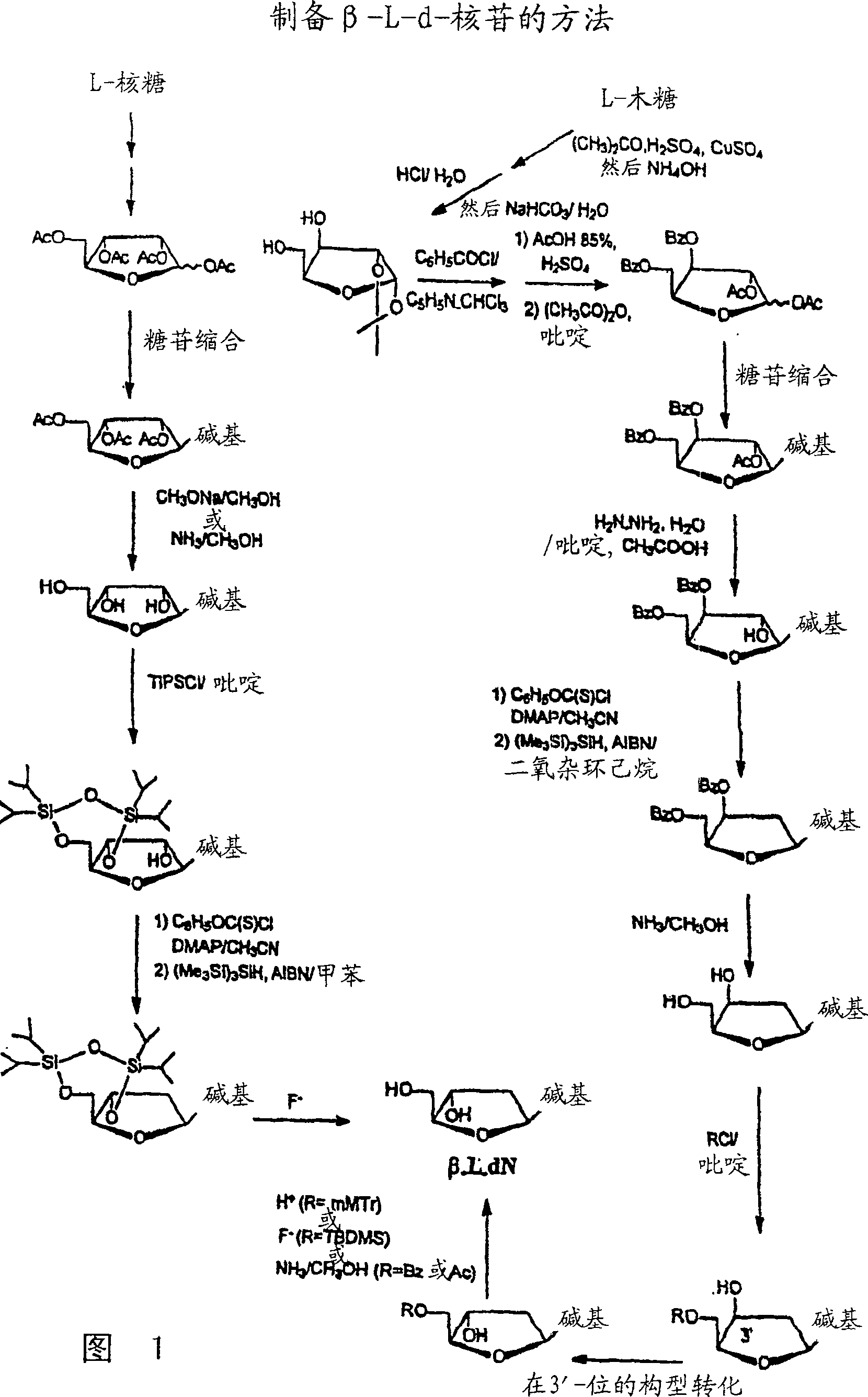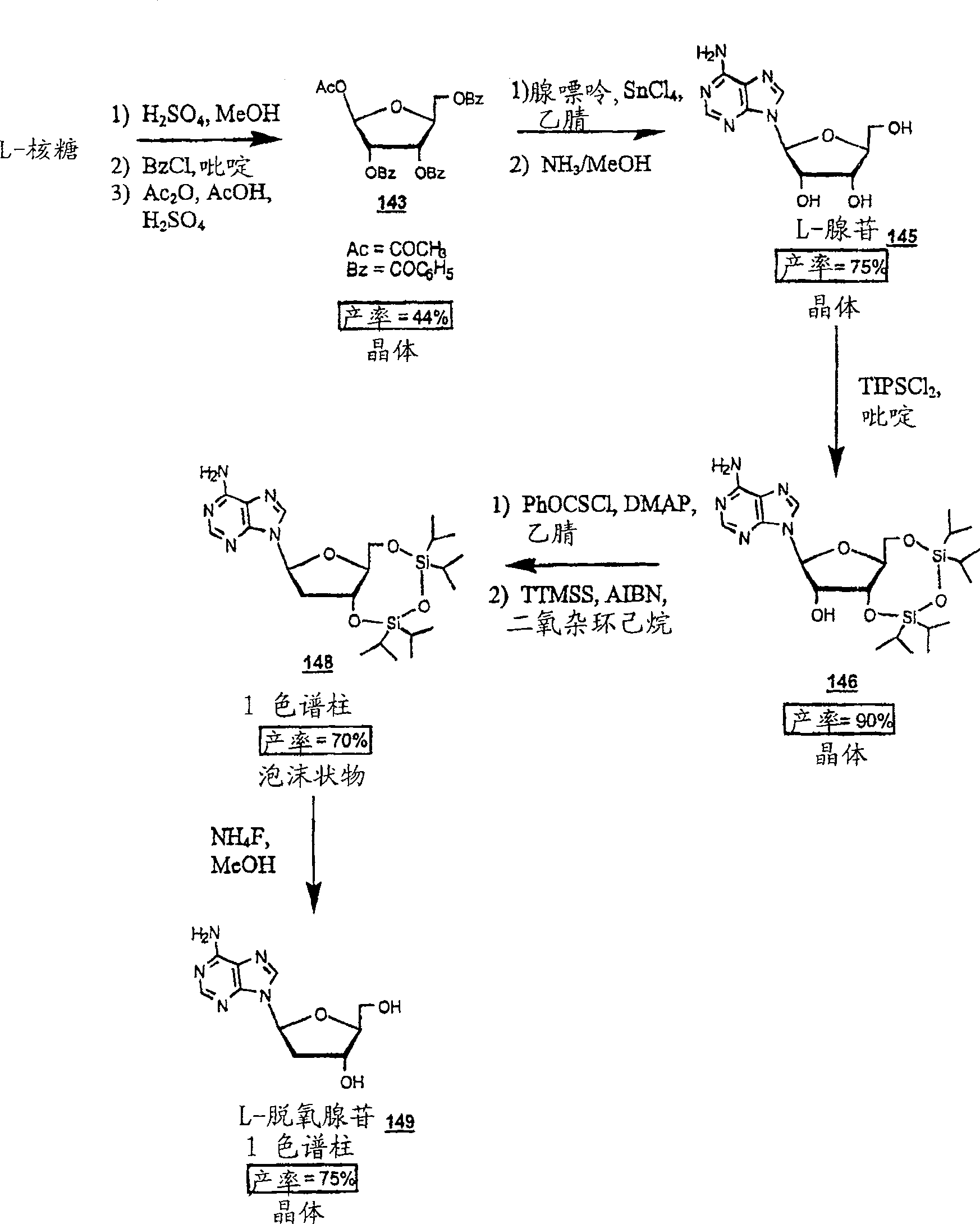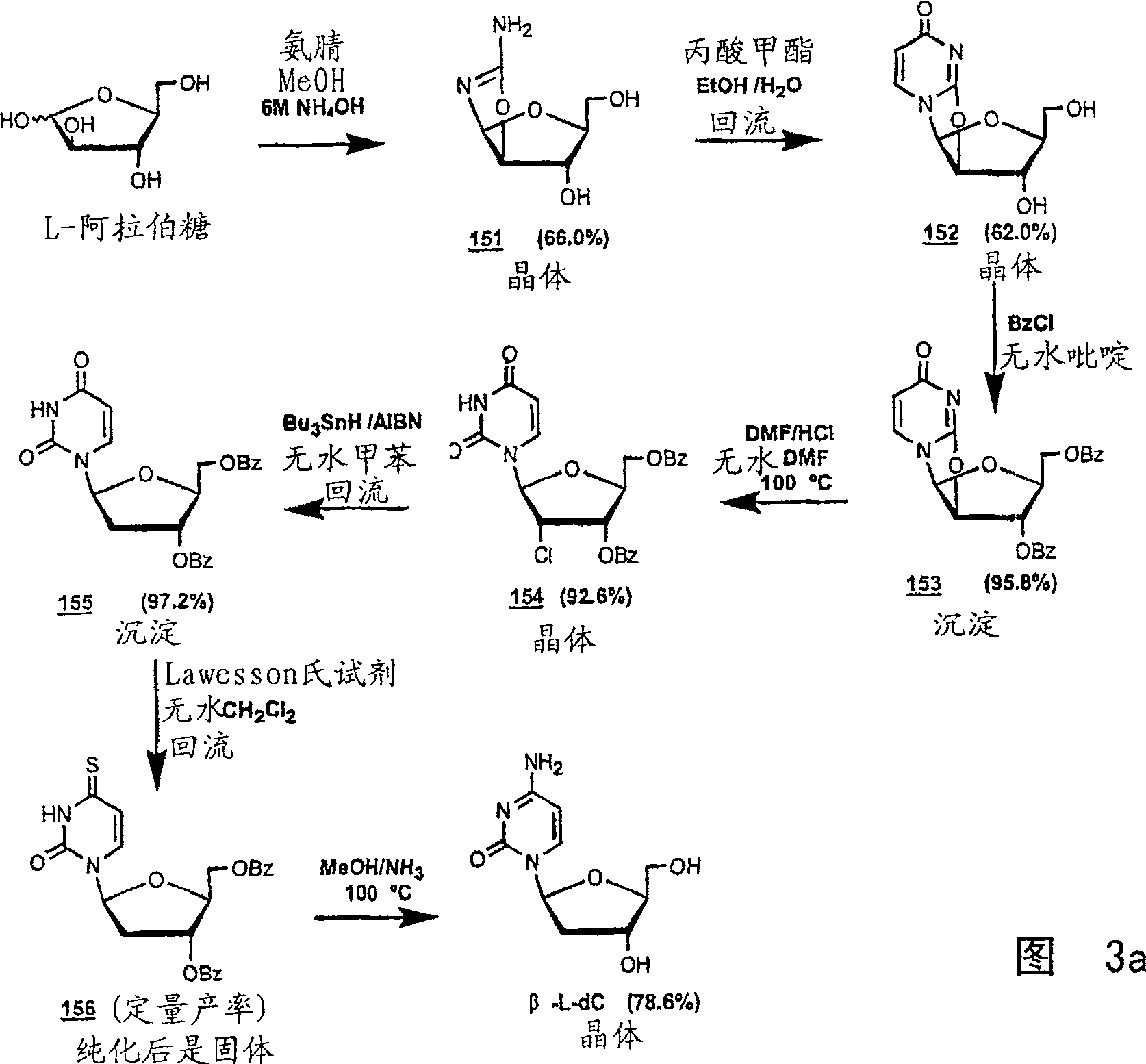Methods for treating hepatitis delta virus infection with beta-L-2' deoxy-uncleosides
A-L-2, virus infection technology, applied in the direction of drug combination, antiviral agent, sugar derivatives, etc., can solve the problems of impact, lack of treatment, etc.
- Summary
- Abstract
- Description
- Claims
- Application Information
AI Technical Summary
Problems solved by technology
Method used
Image
Examples
Embodiment 1
[0168] Example 1 9-(3,5-di-O-benzoyl-β-L-xylofuranosyl)adenine (3)
[0169] 9-(2-O-acetyl-3,5-di-O-benzoyl-β-L-xylofuranosyl)adenine 2 [See: Gosselin, G.; Bergogne, M.-C.; Imbach, J.-L. "Synthesis and antiviral evaluation of β-L-xylofuranosyl nucleosides of five natural nucleobases", vol. Journal ofHeterocyclic Chemistry .1993,30,1229-1233] (8.30g, 16.05mmol) and hydrazine hydrate 98% (234mL, 48.5mmol) solution in pyridine / glacial acetic acid mixture (4 / 1, v / v, 170mL) at room temperature Stir for 22 hours. The reaction was quenched by adding acetone (40 mL) and stirring was continued for 1 hour. The volume of the reaction mixture was reduced to half, diluted with water (250 mL), and extracted with chloroform (2 x 150 mL). The organic layer was washed sequentially with saturated aqueous sodium bicarbonate (3 x 100 mL) and water (3 x 100 mL), dried, filtered, concentrated, and co-evaporated with toluene and methanol. Purification of the residue by silica gel column chroma...
Embodiment 2
[0171] Example 2 9-(3,5-di-O-benzoyl-2-deoxy-β-L-threo-pentofuranosyl)adenine (4)
[0172] To a solution of compound 3 (1.00 g, 2.11 mmol) in anhydrous acetonitrile (65 mL) was added 4-(dimethylamino)pyridine (0.77 g, 6.32 mmol) and phenoxythioformyl chloride (0.44 mL, 3.16 mmol). The mixture was stirred at room temperature for 2 hours. After concentration, the residue was dissolved in dichloromethane (50 mL) and washed successively with water (2 x 30 mL), aqueous hydrochloric acid 0.5N (30 mL) and water (3 x 30 mL). The organic layer was dried, filtered and concentrated to dryness. This thiocarbonylated intermediate was directly mixed with tris-(trimethylsilyl)silane hydride (0.78 mL, 5.23 mmol) and α,α'-azobyronitrile (AIBN, 0.112 g, 0.69 mmol) Reflux in dry dioxane (17 mL) for 2 hours. The solvent was removed in vacuo and the residue was purified by silica gel column chromatography (0-5% MeOH in dichloromethane) to afford pure 4 (0.93 g, 96%) as a foam:
[0173] 1 H N...
Embodiment 3
[0174] Example 3 6-N-(4-Methoxytrityl)-9-(3,5-di-O-benzoyl-2-deoxy-β-L-threo-pentofuranosyl) Adenine (5)
[0175] To a solution of compound 4 (0.88 g, 1.92 mmol) in anhydrous pyridine (40 mL) was added 4-monomethoxytrityl chloride (1.18 g, 3.84 mmol). The mixture was stirred at 60°C for 24 hours. After adding methanol (5 mL), the solution was concentrated to dryness, the residue was dissolved in dichloromethane (50 mL), and washed successively with water (30 mL), saturated aqueous sodium bicarbonate (30 mL) and water (30 mL). The organic layer was dried, filtered, concentrated and co-evaporated with toluene to give pure 5 (1.01 g, 72%) as a foam:
[0176] 1 H NMR (CDCl 3 ): δ 2.9-3.0 (m, 2H, H-2' and H-2"), 3.62 (s, 3H, OCH 3 ), 4.6-4.8 (m, 3H, H-4', H-5' and H-5"), 5.85 (pt, 1H, H-3'), 6.44 (dd, 1H, H-1', J 1’,2’ = 3.1Hz,J 1’,2” =7.3Hz), 6.9 (br s, 1H, NH-6), 6.7-6.8 and 7.2-7.4 (2m, 24H, 2 benzoyl and MMTr), 7.97 and 8.13 (2s, 2H, H-2 and H -8); ms: matrix G / T, (FAB ...
PUM
 Login to View More
Login to View More Abstract
Description
Claims
Application Information
 Login to View More
Login to View More - R&D
- Intellectual Property
- Life Sciences
- Materials
- Tech Scout
- Unparalleled Data Quality
- Higher Quality Content
- 60% Fewer Hallucinations
Browse by: Latest US Patents, China's latest patents, Technical Efficacy Thesaurus, Application Domain, Technology Topic, Popular Technical Reports.
© 2025 PatSnap. All rights reserved.Legal|Privacy policy|Modern Slavery Act Transparency Statement|Sitemap|About US| Contact US: help@patsnap.com



